In the world of B2B, rebranding isn't just about changing logos and colors. It's a strategy that can reposition a company, change the hearts of its consumers, or better represent the organization’s capabilities to the world. It can help a failing company reinvent itself or push a successful company to new heights.
Rebranding can involve redefining your identity, message, and connection with your audience.
At its core, B2B rebranding is about authenticity. Authenticity breeds trust, and trust leads to sales, loyalty, and lasting client relationships. Consumers are wary of gimmicks and empty promises. So, it's crucial to showcase your organization's true values and identity.
In this article, we delve into the world of B2B rebranding. You can expect to:
The value of authentic branding in B2B
When it comes to a B2B branding strategy, authenticity = trust, and trust means sales, loyalty, and repeat clientele. People don’t like feeling manipulated or misled. Brands that capitalize on popular trends that aren’t true to their core values do just that. Issues like greenwashing or virtue signalling can torpedo your audience’s trust.
B2B businesses foster trust and credibility by showcasing genuine values, principles, and identity.
What’s the best way to do that? Starting with a strong, honest narrative. Then, tell your brand’s truth with storytelling.
Storytelling allows you to communicate your business’s journey, mission, and vision in a compelling and relatable way. A well-crafted narrative can humanize a brand, making it more approachable and emotionally resonant.

When potential clients or partners connect with your brand's story, they remember it. Narrative and storytelling also help convey your brand's unique value proposition. And it can help differentiate it from competitors in a crowded marketplace.
So, next time you find a reason to rebrand, make authenticity the bedrock of your changes. Wondering, exactly, how do I rebrand my B2B business? Follow these steps to a successful rebrand.
Successful rebranding examples for B2B
Successful rebrands involve significant changes to a brand’s identity, image, or strategy. The work results in a refreshed, redefined, or revitalized brand, influencing how it’s perceived by a target audience or in the market as a whole.
What is an example of a successful rebrand, you ask? Here are 5 B2B rebranding examples, including key strategies and outcomes:
Adobe
Adobe has had two notable successful rebranding examples in the past. One involves a payment model change. The other involves an organized product family hierarchy system.
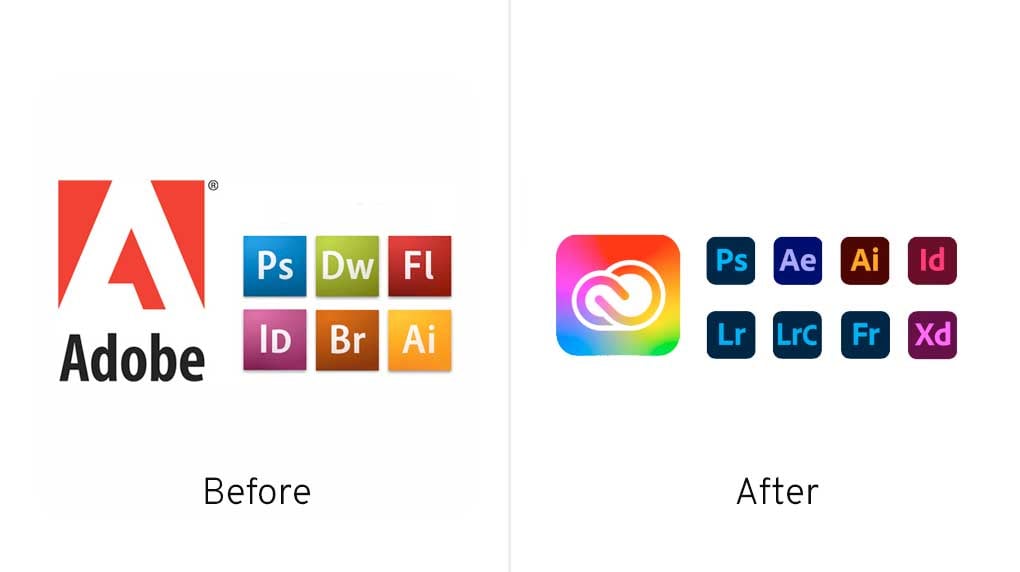
Adobe rebrands to introduce a subscription model
In 2013, Adobe stopped selling software suite licenses. The company switched to a SaaS subscription model. The shift was radical in the marketplace at that time. It was at the forefront of the market phenomenon dubbed the Subscription Economy.
The accompanying rebrand renamed the Creative Suite to the Creative Cloud. Through the rebrand, Adobe sought to win customers over. One tactic was to offer:
- A better range of connectivity,
- Free software updates, and
- Access to third-party apps like Behance.
Adobe rebrands to improve product clarity
Adobe has over 50 products and software packages. The massive menu can get confusing for its audience. Adobe’s most recent rebrand solves this issue through revamped product logos. The results are a clear hierarchy system for product families.
The rebrand uses color and 2- and 3-letter mnemonics for an easy-to-follow organizational system. Plus, they’ve changed their logo for the first time since 1993. Now, it’s an all-red logo, making it as functional as possible at all sizes and across all surfaces.
The name of this rebrand game is clarity through organization.
Dropbox
Arguably, Dropbox is both B2C and B2B. In 2007, they revolutionized content sharing with an easy-to-use cloud-based platform. Over a decade later, the platform has evolved beyond a file storage center. The original brand simply didn’t encompass Dropbox’s capabilities.
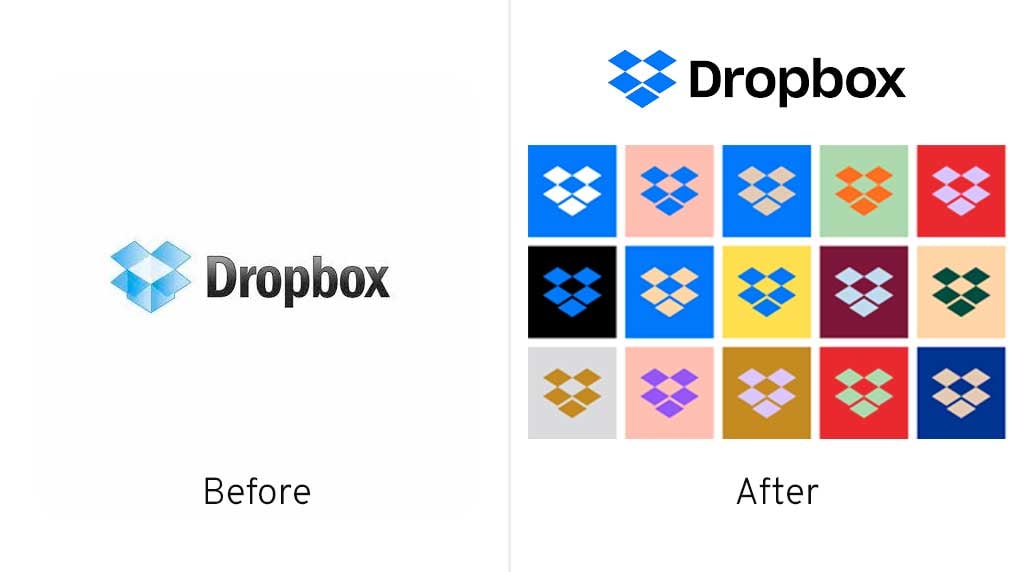
Dropbox’s colorful new look, fun illustrations, and funky font give designers a ton to work with. The rebrand allows them to express the many functionalities of Dropbox as well as modernize the look and feel for today’s audience.
Slack
In 2014, Slack was born and quickly became a popular collaboration tool. Slack started out with a confusing, busy logo and color palette. In 2019, the company rebranded with a more thoughtful visual identity. The brand chose speech bubbles to represent communication and pulled back from their original 11 (yes, 11!) colors to four.
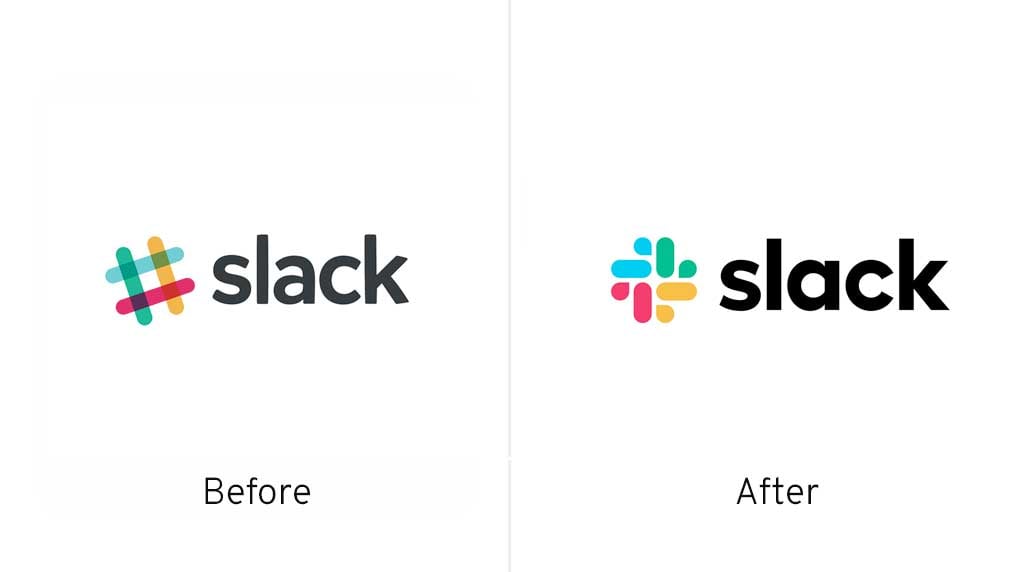
Slack’s new logo and color palette are still recognizable by its audience, allowing for familiarity instead of alienation. The rebrand is effective in solving visual issues while still representing the original brand.
Salesforce
Much like Adobe, Salesforce rebranded its product suite to better serve its customers. They changed the names of certain products in the Marketing Cloud to follow a common naming convention. For example, Salesforce CDP is now Marketing Cloud Customer Data Platform. Interaction Studio is now Marketing Cloud Personalisation.
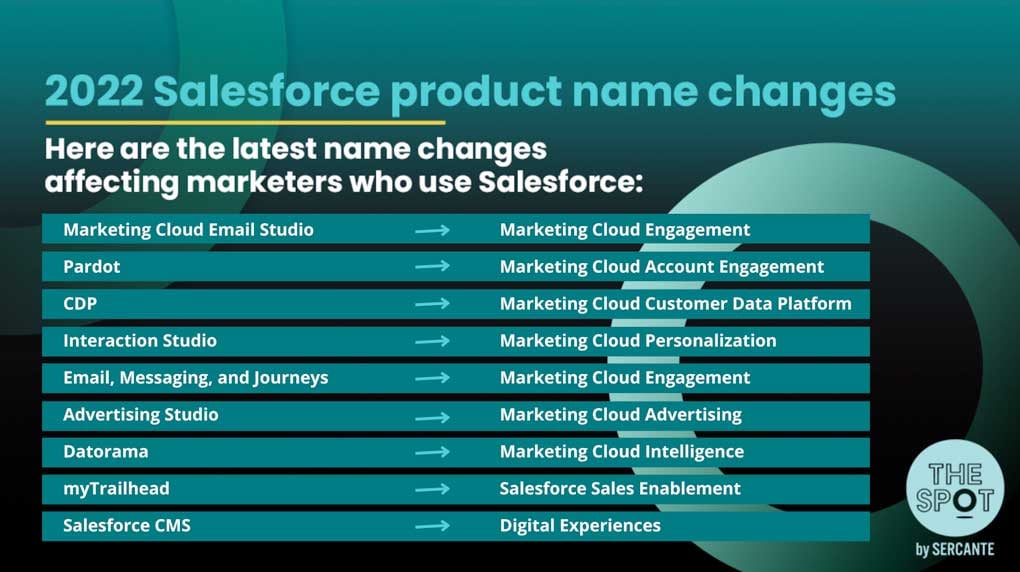
According to a Salesforce statement, the reasons were threefold:
- Easy: The Marketing Cloud portfolio is now closer to a marketing-specific launch. This way, people can understand what the products are capable of at first glance.
- Unified: The new product names serve Salesforce’s strategy to integrate the Marketing Cloud into one unified platform.
- Flexible: Salesforce is looking ahead. These product names are intentionally sustainable and future-proof for the market.
Connectbase
Connectbase is a cloud-based company operating in the connectivity industry. Their bread and butter is trusted, location-specific demand and supply data.
Connectbase went through a rebrand in order to communicate its product suite clearly. They also needed to express themselves as an established and innovative organization without losing any brand equity.
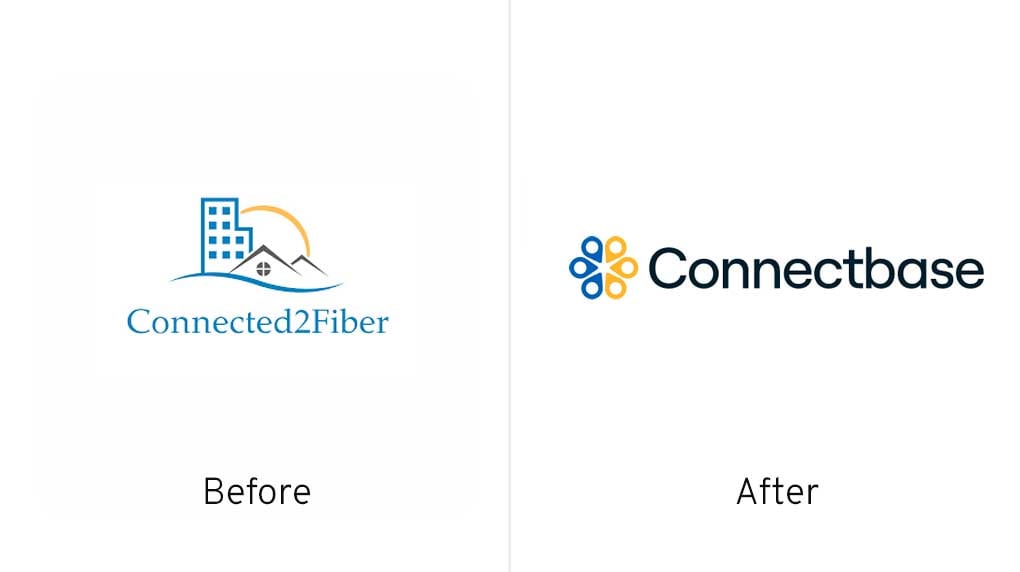
Since Major Tom was at the helm of this rebrand, we have an inside look into the strategy and tactics taken. This rebrand saw:
- Collaborative workshops to better understand the business and the narrative,
- Stakeholder and client interviews which gained an understanding of the business through the eyes of the internal team and customers, and
- Workshops designed to provide clarity surrounding visual preferences.
The rebrand included a new name and tagline — Connectbase, Where the World Connects — and look and feel. The rebrand pulls elements of the old brand through as a brand equity through-line.
The results are new, sophisticated brand assets for Connectbase alongside compelling messaging and a competitive positioning statement.
Three lessons from the rebrand examples above
- Clear brand identity: A well-defined brand identity is crucial for rebranding success. Much like Slack demonstrated, sometimes less is more — don’t be everything to everyone when it comes to branding.
- Customer-centric focus: Customer-centric approaches, like Adobe's subscription model. These can lead to increased recurring revenue.
- Streamlined focus on market-relevant needs: Make decisions based on what the market needs. Xerox, for example, changed its market position by transitioning its business model. They moved away from traditional print-related products. Instead, they focused on digital document solutions and services.
Strategies and lessons for a successful B2B rebrand
Rebrand examples are great to emulate, but to really succeed, you need to take their strategies and learn from them.
Strategies you can steal from companies that have rebranded successfully
When thinking to yourself, “How do I rebrand my b2b business?” we highly recommend including the below to help guarantee success. The proof is in the pudding: All of the tactics below were taken with the Connectbase rebrand mentioned above.
Take an integrated expertise approach. Integrate SEO, creative design, and digital strategy into the rebranding process. An approach like this makes sure you’re not simply making cosmetic changes. Instead, it positively impacts all aspects of your business.
Take a data-driven creative strategy. Use data and analytics to inform creative decisions. Back up your emotional appeal with logical reasoning since that’s often how your B2B audience will make their decisions.
Customized workshop approach. When rebranding, your best asset is the people in your company who know it inside and out. Collaborative workshops help your rebrand align with the company's business goals and culture. Done right, they can uncover new ideas and foster inventive perspectives.

Sustainability and future-proof branding. Focus on creating brands that are sustainable and adaptable. They should also be able to adjust to future market changes and technological advancements. Steer clear of momentary trends and tastes.
Five ways to measure your rebrand’s success
- Customer perception: Evaluate how customers perceive the rebrand through surveys and feedback.
- Financial metrics: Monitor financial metrics like revenue, market share, and profitability to assess the impact of the rebrand.
- Employee engagement: Measure employee engagement and alignment with the new brand's values and mission.
- Market positioning: Assess the brand's position in the market compared to competitors post-rebrand.
- Long-term sustainability: Consider the brand's ability to adapt and thrive in the long term. Predicting the future is tough, but adaptability and authenticity are key concepts to consider.
Overcoming objections and budget concerns
When addressing common objections to rebranding, including concerns like budget limitations and necessity, you need to take a strategic approach.
Provide a clear and convincing rationale for your rebranding project. Here are a few tactics you can use to drive home your argument:
- Define clear objectives
- Create a financial analysis including the direct and indirect impact of the rebrand
- Use data and analytics tools
- Use case studies and success stories from other companies that have rebranded
- Outline the ways your current brand is failing
- Prepare a cost-benefit analysis
Unsure what the investment and ROI of rebranding actually look like? Here are the potential varying costs of brand services if considering an agency.
B2B rebranding
In the ever-evolving world of B2B, rebranding isn't just a cosmetic change—it's a strategic imperative. Authenticity, storytelling, and strategic thinking are your secret weapons to success.
By looking at brands like Adobe, Dropbox, and Slack, you can reverse engineer your own rebrand strategy. Keep your audience’s needs front and center, be honest about what your brand stands for, and adapt to market changes, and you’ll become a success story yourself.
Embrace rebranding as an opportunity for growth and innovation. Remember that Major Tom is here to provide the expert guidance and support you need to succeed. Trust in the power of a well-executed rebrand, and watch your business blast off to new heights in the B2B atmosphere.
Feel free to check out our brand strategy page and reach out if you have any questions.